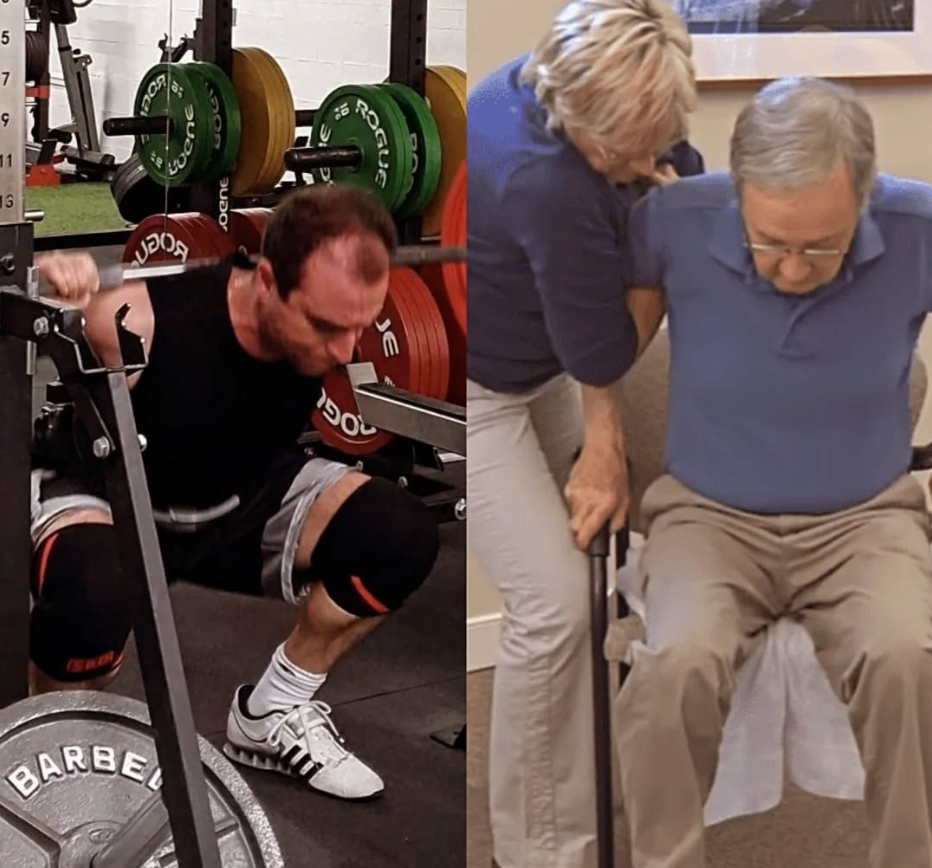Are Popping and Clicking Shoulders A Bad Thing? - What to do about them
- Stephen Strumos

- May 4, 2020
- 3 min read
Updated: May 6, 2020
Certain shoulder movements can be accompanied by a popping or clicking sound called “crepitus”. The good news is that it’s mostly benign unless accompanied by pain.
However, the sounds can be an indication that there's a restriction somewhere in the joint. (Plus it's annoying to listen to).
The shoulder is an extremely complex ball-and-socket joint that relies heavily on the musculature around it for stability. Because of how mobile it is, it lacks stability in certain ways, especially if you neglect training your scapular stabilizers.
The goal should be to improve the mobility and strength of the shoulder while increasing overall joint fluidity to get rid of that annoying clicking sound.
Issues arise when you only focus on training large compound movements that stress the joint (i.e. bench pressing and shoulder pressing), without strengthening the smaller muscles around the shoulder like the rotator cuff and rhomboids.
In terms of fixing that sound the joint makes and clearing up any restriction, I like to focus on four areas:
1. Scapular elevation and depression control
2. Shoulder extension and scapular retraction
3. External rotation and rotator cuff strength
4. Single-arm shoulder stability
I will now show you examples of how to work on each of these movements with the end goal of creating balanced strength around the shoulder joint.
Scapular elevation and depression control
I personally like to begin with training overhead type movements, as that is the most common movement in which people will hear a popping or clicking sound. The goal here is to "reset" the shoulder joint by sinking the head of the humerus deeper into the socket of the scapula.
Regardless of the exercise, focus on sitting the scapular down and back to prevent a "shrugging" of the shoulders and kicking into the upper traps and neck.
With the mini-band wall slides you're combining protraction, elevation, and depression of the scapular while the regular wall slides use retraction, elevation, and depression.
Shoulder extension and scapular retraction
Prone lift-off type exercises are great at training scapular retraction. We spend far too much time in a forward shoulder position, making sitting the shoulders back like this difficult. Retracting like this sets the shoulders in a stable position and is an important cue in nearly every exercise you do.
External rotation and rotator cuff strength
The rotator cuff muscles all coordinate to hold the head of the humerus into the ball-and-socket joint properly. They are also responsible for generating torque in the joint in the form of external rotation, an important stabilizing movement. When there are issues in the shoulder joint, some rotator cuff tendons can become pinched and inflamed, causing pain and dysfunction.
Single-arm shoulder stability
Using your shoulder to support your weight and maintaining a stable shoulder is a culmination of the above training movements. These movements are what you would use in the later stages of shoulder rehab and stability work because they require you to have more control. You should be able to perform these without shrugging your shoulders and without rounding into a forward posture.
Using the above examples, you can have a well-rounded shoulder strengthening program aimed at reducing cracking and popping in the joint.
To your good health,

For updates on when new content is available and first look information about special coaching offers, subscribe to my email list by filling in the form at the bottom of the page!
Getting started can be a tough thing to do, and the main reason is that people don’t know where to start.
That’s where I come in.
Regardless of whether you live in the GTA (Greater Toronto Area) and can do in-person coaching with me or you live anywhere else in the world and can do online coaching, I can put a plan in place to help you get to where you need to be.
For more information, check out my coaching options or what my clients have to say.
.png)



Comments